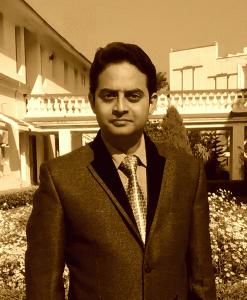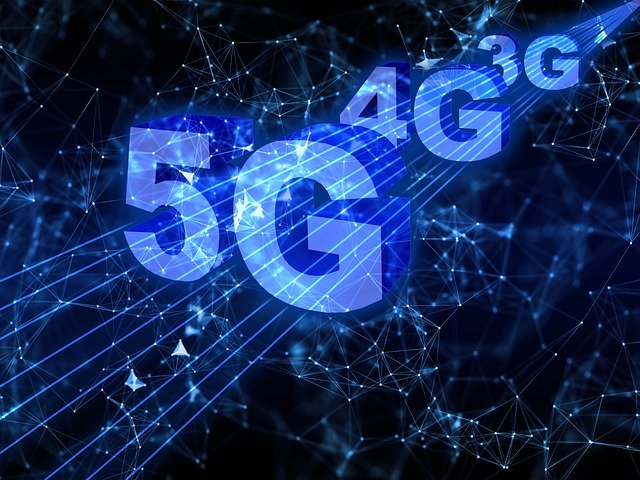12/22/2020 we did a complete voice over on the course to improve audio quality
Description
In RAHAE310 we would be concentrating on evolution of wireless technology i.e. 1G to 5G with all aspects and type of antennas used in all previous wireless technology based mobile phone. Many beamforming techniques like Butler matrix, Blass matrix, Disruptive beamforming have been discussed. It contains the fundamental concepts of beam management, beam scanning and principle behind the metasurfaces explained in simply way. This course addresses the phased array, different phase shifting methods and its advantages over planar array and briefly explains the massive MIMO technology and its role in 5G technology.
What is the target audience?
- Prerequisite for students planning to get Rahsoft RF Certificate for RAHAE 310 course which is a complete package of phased array and massive MIMO technology for 5G technology.
- This course is set for professionals working in the area of Beamforming, massive MIMO and Phased array.
- Antenna Engineer
- Post graduate students
- Research scholars in RF field
- RF technician
- Test Engineers in the RF Industry
Course content
- Revolutionary Evolution of 5G Technology
- Requirements to Implement 5G Technology
- Beamforming
- Beam Scanning
- Beam Splitting
- Phased Array
- Role of Massive MIMO in 5G
- RF Antenna diversity and it’s requirements in 5G Communication
About Instructor:

Akhilesh Verma, PhD Candidate
Antenna Engineering Scientist at Rahsoft
PhD candidate in 5G Antennas, Akhilesh has more than 6 years of teaching experience for undergraduate courses. Akhilesh has a proven track of Antenna design and analysis. Akhilesh works on Rahsoft’s RF Certificate to include the most updated criteria in the courses. Akhilesh is an Antenna engineering scientist at Rahsoft with specialization in 5G antennas, Microstrip filters, Disruptive Beamforming, Beam splitting networks design. He has designed and tested various type of antennas such as microstrip antenna using different feed, Planar inverted-F antenna (PIFA), passive phase shifters, Substrate integrated waveguide antenna, Circuit equivalent model of antenna, Metasurfaces (MS) for beamforming.
Course Advisor:
Ahsan Ghoncheh
Head of RF and Antenna Department at Rahsoft
Course Features
- Lectures 57
- Quiz 0
- Duration 3.5 hours
- Skill level All levels
- Language English
- Students 137
- Certificate Yes
- Assessments Yes
Curriculum
- 8 Sections
- 57 Lessons
- 900 Weeks
- Introduction4
- Revolutionary evolution of 5G technology5
- 5G Technology5
- 4.1RAHAE310.02.P04 5G spectrum, country wise 5G trial10 Minutes
- 4.2RAHAE310.02.P04.1 Millimter-wave spectrum for 5G4 Minutes
- 4.3RAHAE310.02.P04.2 Millimeter-wave signal quality challenges4 Minutes
- 4.4RAHAE310.02.P05 5G characteristics, Applications, types5 Minutes
- 4.5RAHAE310.02.P06 5G triangle briefly7 Minutes
- Antenna used in previous wireless technology1
- Requirements to implement 5G22
- 6.1RAHAE310.04.P01 Beamforming7 Minutes
- 6.2RAHAE310.04.P01.1 Types of beamforming (Butler matrix)4 Minutes
- 6.3RAHAE310.04.P01.2 Types of beamforming (Blassmatrix)2 Minutes
- 6.4RAHAE310.04.P01.3 Disruptive Beamforming3 Minutes
- 6.5RAHAE310.04.P01.4 ROTMAN lens antenna2 Minutes
- 6.6RAHAE310.04.P01.5 ROTMAN lens operating parameters4 Minutes
- 6.7RAHAE310.04.P01.6 Multi stage lens antenna3 Minutes
- 6.8RAHAE310.04.P02 Important points about beamforming and advantages of beamforming2 Minutes
- 6.9RAHAE310.04.P03 Discussion on omnidirectional pattern and beamforming2 Minutes
- 6.10RAHAE310.04.P04 Beam management5 Minutes
- 6.11RAHAE310.04.P04.1 5G beamforming antennas design issues5 Minutes
- 6.12RAHAE310.04.P05 Beam scanning2 Minutes
- 6.13RAHAE310.04.P06 Beam scanning method2 Minutes
- 6.14RAHAE310.04.P07 Beam splitting3 Minutes
- 6.15RAHAE310.04.P07.1 Methods of beam splitting2 Minutes
- 6.16RAHAE310.04.P07.2 Metasurface4 Minutes
- 6.17RAHAE310.04.P07.3 Metasurface3 Minutes
- 6.18RAHAE310.04.P07.4 High impedance surface5 Minutes
- 6.19RAHAE310.04.P07.5 Reflection phase of the high impedance surface at normal incidence2 Minutes
- 6.20RAHAE310.04.P07.6 Applications of metasurfaces3 Minutes
- 6.21RAHAE310.04.P07.7 Microwave absorber3 Minutes
- 6.22RAHAE310.04.P07.8 Different way to achieve beam split3 Minutes
- Phased array9
- 7.1RAHAE310.05.P01 Phased array introduction5 Minutes
- 7.2RAHAE310.05.P02 Phased array principle3 Minutes
- 7.3RAHAE310.05.P03 Operation of phased array antenna5 Minutes
- 7.4RAHAE310.05.P04 Advantages and disadvantages of phased array3 Minutes
- 7.5RAHAE310.05.P05 Possible arrangements of phased array5 Minutes
- 7.6RAHAE310.05.P06 Different types of phase shifting method/Phase shifting by changing frequency4 Minutes
- 7.7RAHAE310.05.P07 Phase shifting by changing length3 Minutes
- 7.8RAHAE310.05.P08 Phase shifting by changing permittivity3 Minutes
- 7.9RAHAE310.05.P09 Phase shifting by changing permeability4 Minutes
- Massive MIMO10
- 8.1RAHAE310.06.P01 Introduction to cellular networks5 Minutes
- 8.2RAHAE310.06.P02 Introduction to cellular networks4 Minutes
- 8.3RAHAE310.06.P03 Introduction to cellular networks3 Minutes
- 8.4RAHAE310.06.P04 Classification of MIMO technology6 Minutes
- 8.5RAHAE310.06.P05 Classification of MIMO technology6 Minutes
- 8.6RAHAE310.06.P06 Classification of MIMO technology5 Minutes
- 8.7RAHAE310.06.P07 Massive MIMO2 Minutes
- 8.8RAHAE310.06.P08 Favourable propagation massive MIMO3 Minutes
- 8.9RAHAE310.06.P09 Advantages of massive MIMO3 Minutes
- 8.10RAHAE310.06.P10 phased array vs massive MIMO4 Minutes
- RF antenna diversity and its requirements in 5G Communication1


